Global Site
Breadcrumb navigation
AI Supports Proper Exercise at Home to Provide an Experience Comparable to the Exercise Coaching of a Physical Therapist
Featured TechnologiesJune 23, 2025
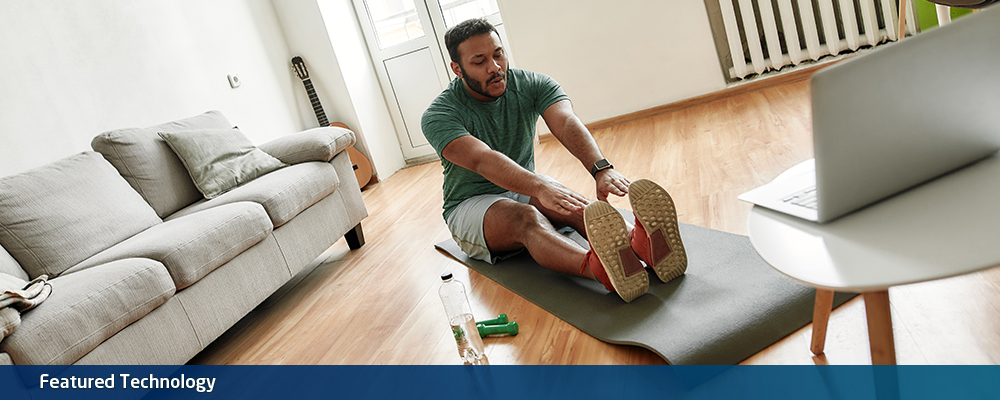
It is said that roughly one in five people in Japan suffer from lower back pain (Note 1) with many cases consisting of chronic lower back pain lasting for long periods. However, many people who suffer from lower back pain are likely to leave their pain untreated due to the frequent hospital visits and considerable expense required to receive proper treatment. In response to this social situation, NEC has continued to research whether IT can be used to create a service that would be comparable to the exercise coaching provided by a physical therapist. The exercise support AI recently announced by NEC is a technology that automatically analyzes one's exercise movements, checks whether they match the key points emphasized by physical therapists, and provides advice for proper exercise. We spoke in depth with the researchers and business manager involved about the details and future prospects of this technology which enables a more accessible form of self-care.
- Note 1:(Source) 2012 General Research Report on the Large-scale Population Cohort Follow-up Study of Regional Representativeness for Elderly Preventive Care for Knee Pain, Lower Back Pain, and Fractures, Ministry of Health, Labour and Welfare, Scientific Research Grant, Comprehensive Research Project on Longevity Science
AI supports proper exercise form
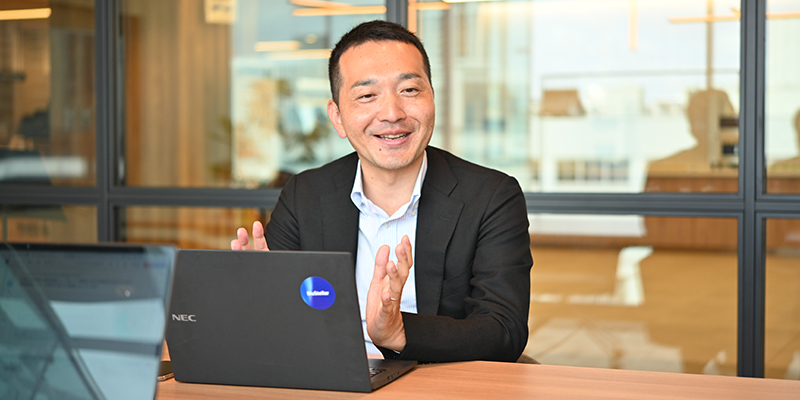
Digital Healthcare Research Group
Director
Yuki Kosaka
―Please tell us more about this recently announced AI technology that provides exercise support.
Kosaka: We added new functions to the self-care support AI technology announced last year. The previous technology had users record themselves performing forward/backward bending and rotation with a smartphone or tablet computer camera and answer questions in a checklist format to present videos of exercise programs customized to each individual. The updated version offers further support for subsequent stages. When the user records themselves performing the recommended exercises, it uses AI to check whether the movements required by the exercise are being properly performed. In addition, the technology also generates advice and provides feedback to correctly perform the movements. It takes about 30 seconds from video entry to generate and output the advice.
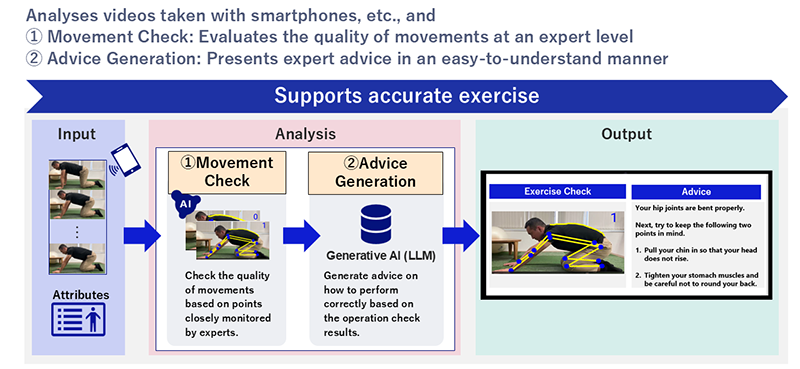
When we announced this technology last year, we were thinking of deploying it as a service for maintaining and improving motor functions in anticipation of a super-aging society. However, we are now looking at business development on a broader scale. We are now also targeting casual segments such as business people who suffer from back problems over many years.
Taguchi: After last year's announcement, we launched a new service for companies called "Physical Care For BUSINESS" from the perspective of health management and have deployed it to several companies. The service is offered fully online starting with a workshop presented by a physical therapist followed by a check of each participant's physical condition and support in the form of exercises tailored to each individual. Incidentally, the physical therapists are staff members affiliated with the "NEC Karada Care" which is operated by NEC with support from the Institute of Science Tokyo (formerly Tokyo Medical and Dental University). We are working on incorporating the technology announced last year into this service and considering a method in which each individual participant checks their physical condition while a physical therapist takes those results into consideration to perform the final check.
There are many business people in the prime of their lives who suffer from physical problems in their back and shoulders, etc. Even if they do not really need to take sick leave or go to the hospital, there are likely a great number of people who are constantly dealing with such physical problems. This situation can be said to impact corporate productivity, and above all we thought that we could solve this situation by providing a service that enables people to easily conduct physical self-care online. Another major advantage of developing the service in a fully-online format is that it provides employees at companies with branches in a wide range of locations from Hokkaido to Okinawa, etc. with equal opportunities to receive care.
We think that we can help people continue to perform the proper exercises by also incorporating this new technology into the "Physical Care For BUSINESS" service. In fact, when the users are exercising on their own after receiving instruction, they will anxiously wonder if they are performing the movements correctly. By using this technology to provide feedback to the users about the correctness of the exercises, we hope to create a service that can eliminate such anxieties as much as possible and seamlessly connect them to the next coaching session with a physical therapist.
Training an AI on the perspective, judgment, and advice of a physical therapist
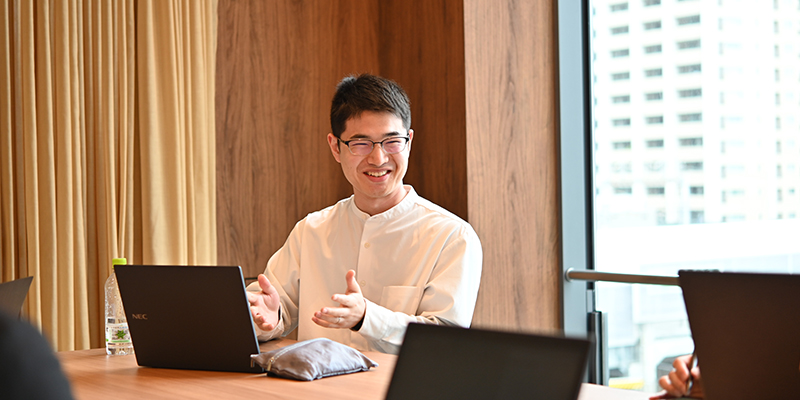
Digital Healthcare Research Group
Researcher
Kensuke Wagata
―Specifically, what kinds of technologies are used?
Wagata: Since the major objective is to provide coaching on a level that is comparable to a physical therapist with AI, we broke down the necessary elements into "perspective," "judgment," and "advice" and developed technologies to address each of those elements.
Regarding the "perspective" of what parts of the body to focus on during exercises, we spoke to physical therapists from NEC Karada Care and received a detailed lecture about common exercise mistakes, etc. One of the innovative aspects of this technology is that we annotated (added notes) to the video data used to train the AI so that the AI can effectively evaluate the user's exercise form based on the perspective taught by the physical therapists. However, the key points in these videos required discerning extremely subtle differences that appeared non-existent to someone like me, who lacks any specialized knowledge of physical therapy. Therefore, we created precise annotation with the cooperation of a researcher from the same team with clinical experience as a physical therapist.
For "judgment," we needed a high degree of accuracy, but the lack of training data and quality became a problem. Generally, an AI model is developed by training on as many as tens of thousands of data in applications for object detection, etc. In contrast, the data that we had was limited to only a few hundred points of data recorded while several members of our team performed the exercises. Such an AI model would not be able to cover individual differences in the real world.
Kosaka: There are not many datasets that include exercises requiring fine movements. Therefore, we worked hard until last year to perform these exercises and create a dataset on our own. During that time, Wagata joined the team and pointedly asked, "What are you guys doing? No matter how hard you try, it will be impossible to ensure a sufficient quantity of data to train an AI model." (Laughs) When asked what he would do instead, he suggested, "Let's generate the data!" This proposal opened up a new path for the team.
Wagata: Yes (laughs), that is just how it happened, and we developed a new technology to artificially generate and increase the data. However, rather than simply increasing the amount of data, we developed a technology that generates movements with intermediate characteristics of the movements of two different people, thereby expanding the diversity of movements within the data. This enabled us to ensure not only the data quantity but also the quality and approach the highly accurate judgment of a physical therapist.
Kosaka: Furthermore, we increased the accuracy by focusing on multiple parts of the body, such as estimating back movements with high accuracy, since they are usually difficult to distinguish and an area of focus for physical therapists. For example, in exercises which require a focus on back movements, we focus not only on the back movements but also the accompanying neck movements, etc. However, as you increase the number of features to be analyzed, the amount of processing becomes huge, and the speed decreases. So, we made adjustments to achieve the appropriate balance between the two aspects.
In terms of "advice," our goal was to achieve a level of quality that is comparable to the advice provided when a physical therapist is actually giving instruction. At the time, we thought it would be better to point out the differences with the correct movements in as much detail as possible and worked really hard to be able to generate extremely detailed information. However, when we showed the results to physical therapists, they were completely off base. First, they said "Too long" (laughs). When a physical therapist offers advice, it is actually only a few lines long. They pointed out that if the advice is too long, people won't read it and lose motivation. In addition, they also emphasised the importance of initially praising the user for what they are doing right. This is embarrassing to admit, but we only thought about commenting on mistakes in the execution of the exercises, so the points that they highlighted were a source of great insight.
In this way, we were able to adjust the model to generate short pieces of advice in just the right amount to gradually correct improper movements and maintain the user's motivation from the medium- to long-term perspective of continuing to exercise and making it a regular habit.
Achieving speedy development through collaboration with NEC Karada Care
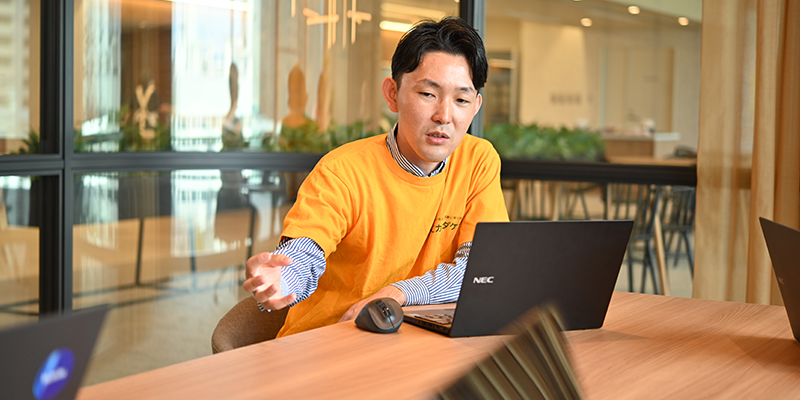
Medical Solutions Division
Lifestyle Support Group
Professional
Tomoaki Taguchi
―How does this technology and service incorporate NEC's unique strengths?
Kosaka: I think the fact that the company is developing "Karada Care For BUSINESS" is a major strength. Because NEC itself has actual store where it provides in-person physical care services, the research and development cycle turns rapidly. In the case of this project, the development proceeded in an efficient manner due to smooth communication with the physical therapists.
Taguchi: Yes, that is true. NEC has an innately unusual structure in that it is a system integrator while also being a business organization which is operating its own physical care business. This enables the company to quickly test component technologies in the actual field and feeding those results back to research. I think that the ability to brush up technologies according to the expectations of those in the field is one of NEC's strengths in this area.
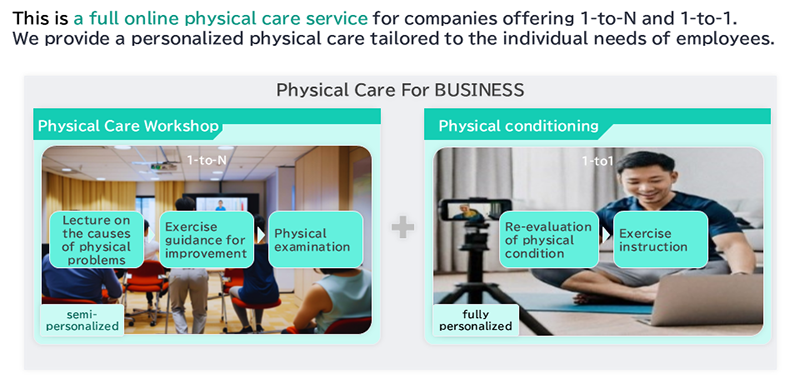
Furthermore, because NEC has been doing business with customers in a wide range of business areas for a long time, the fact that we are in an environment where we can deliver the optimal proposal based on the issues faced by each customer is one of our business strengths. In addition, I think that our ability to collaborate with an academic partner such as the Institute of Science Tokyo to develop a pilot project leads to trust in the quality of our services.
―I see. How do you plan to deploy this technology going forward?
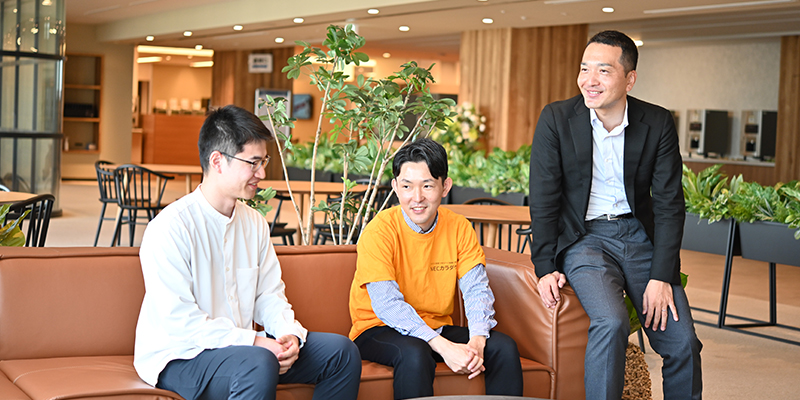
Wagata: Currently, we are still at the stage where we can demonstrate specific exercises. We recognize that going forward we need to support more exercises to prepare for practical application in the field. To that end, we believe that we must develop technologies to reduce the costs of collecting training data. Furthermore, while this current technology helps improve lower back pain, I think that technologies to help prevent back problems before they start will become important in the future. We would also like to tackle the challenge of such an approach.
Kosaka: Yes, that's right. Now that we have come close to a completed version, some issues have also become apparent. I think that there is still room for improvement in terms of speed and robustness so that many users can use the technology comfortably, so we would like to continue advancing our research to help improve the service further.
Taguchi: For that reason, we would first like to explore the implementation of the recently announced exercise support AI to "Physical Care For BUSINESS" In addition, based on last year's results, we plan to deliver this service to more customers.
Physical care is an area where it is easy to feel the effects in a visible way. By providing such convenient self-care services to all business people with back, shoulder, and other problems, we hope to expand to solving other health issues such as stress and quality sleep while focusing on physical problems and create a service that provides total support to business people.
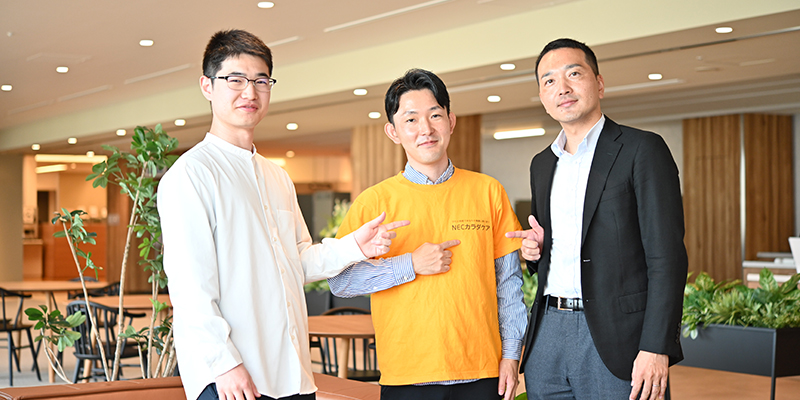

This technology adds new functions to the self-care support AI technology announced last year to offer exercise support. It uses AI to analyze videos of exercises that require detailed movements and can output advice at a level that is comparable to that of a physical therapist.
In developing this technology, the project team interviewed physical therapists regarding the key points to focus on during the exercises and then recorded the exercise videos themselves for AI model training. Furthermore, because the annotation needed by the training data requires the ability to identify extremely subtle differences, the process is managed by physical therapists.
The team also developed a data augmentation technology to generate movements in between multiple users to compensate for the lack of training data.
In addition, when outputting advice, the system incorporates a large language model (LLM) to adjust the wording used to encourage the user to continue exercising by narrowing down the amount of information to the appropriate level and considering the user's motivation based on the experience of actual physical therapists.
In both cases, the know-how acquired from collaborating with the "NEC Karada Care", which is operated by NEC with support from the Institute of Science Tokyo, has greatly contributed to the development of this technology.
- ※The information posted on this page is the information at the time of publication.